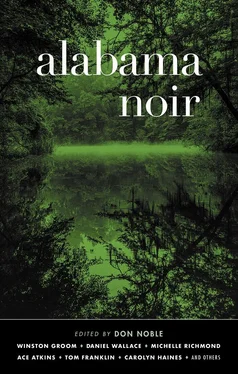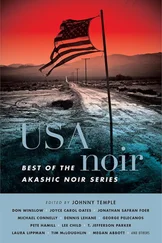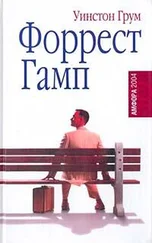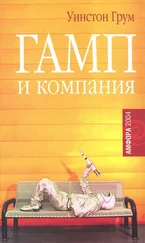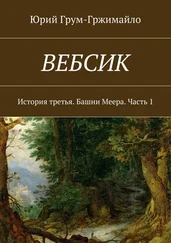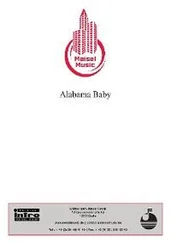Уинстон Грум - Alabama Noir
Здесь есть возможность читать онлайн «Уинстон Грум - Alabama Noir» весь текст электронной книги совершенно бесплатно (целиком полную версию без сокращений). В некоторых случаях можно слушать аудио, скачать через торрент в формате fb2 и присутствует краткое содержание. Город: New York, Год выпуска: 2020, ISBN: 2020, Издательство: Akashic Books, Жанр: Детектив, на английском языке. Описание произведения, (предисловие) а так же отзывы посетителей доступны на портале библиотеки ЛибКат.
- Название:Alabama Noir
- Автор:
- Издательство:Akashic Books
- Жанр:
- Год:2020
- Город:New York
- ISBN:978-1-61775-914-7
- Рейтинг книги:4 / 5. Голосов: 1
-
Избранное:Добавить в избранное
- Отзывы:
-
Ваша оценка:
- 80
- 1
- 2
- 3
- 4
- 5
Alabama Noir: краткое содержание, описание и аннотация
Предлагаем к чтению аннотацию, описание, краткое содержание или предисловие (зависит от того, что написал сам автор книги «Alabama Noir»). Если вы не нашли необходимую информацию о книге — напишите в комментариях, мы постараемся отыскать её.
Alabama Noir — читать онлайн бесплатно полную книгу (весь текст) целиком
Ниже представлен текст книги, разбитый по страницам. Система сохранения места последней прочитанной страницы, позволяет с удобством читать онлайн бесплатно книгу «Alabama Noir», без необходимости каждый раз заново искать на чём Вы остановились. Поставьте закладку, и сможете в любой момент перейти на страницу, на которой закончили чтение.
Интервал:
Закладка:
Alabama Noir
To my friend Dr. David K. Jeffrey, lover of noir

Introduction
Troubles and Foibles
There must be places like Hawaii where the idea of noir would be difficult to accommodate. Sunshine, drinks in a coconut, warm beaches, and leis do not generate the fear, darkness, and despair on which noir thrives.
Alabama also has plenty of sunshine, some lovely beaches, and only a few foggy waterfronts where miscreants lurk, but it has been a famously dark place. Americans of a certain age read in their daily papers about the burning of the Freedom Riders’ bus in Anniston and about the KKK beating those riders at the Birmingham and Montgomery bus stations in May 1961, with the silent cooperation of law enforcement. Americans actually watched, on the evening news, the German shepherds and fire hoses used on demonstrators in Birmingham and the violence at the Edmund Pettus Bridge in Selma.
These days, Alabama has truly turned a corner on race, but the past will not, should not, and in fact cannot be forgotten. We are aware of the past here on a daily basis.
In Montgomery, the public interest lawyer Bryan Stevenson has overseen the creation of the National Memorial for Peace and Justice, which features more than eight hundred hanging steel slabs, each representing an American county, with the names of lynching victims inscribed. It also features hundreds of jars of earth, taken from the sites of murders, from underneath tree limbs, and from places where shootings occurred. A walk through the memorial is sobering, chilling.
One might expect that many of the stories in this collection would focus on racial injustice, and indeed some do. Anthony Grooms sets his story in a period of violence from an unusual African American point of view — that of a professor at the historically black school Miles College.
The news these days is full of stories concerning the inadequacies and dangers of the Alabama prison system, where homicides and suicides abound. Ravi Howard sets his story in Holman Prison, where executions are carried out, and tells of one person’s maneuver to mitigate that cruelty. Both Thom Gossom Jr. and D. Winston Brown place their stories inside black communities; racial prejudice is always present but not exactly the catalyst for action.
It is perfectly appropriate that racial injustice permeates Alabama Noir . But of course, so do many other themes and obsessions of traditional noir, those based on the violent and dark side of human nature. Noir has been enjoying a strong resurgence in the past few years, nationwide, even worldwide, in fiction and in film, and aficionados understand that its roots are to be found in many places: Black Mask magazine stories, for example, or the novels of James M. Cain and others. But perhaps the best-known noir novel of all time is Dashiell Hammett’s The Maltese Falcon, and it serves amazingly well as a model or template for the form.
In The Maltese Falcon , Sam Spade, private detective, exasperated, declares, “When a man’s partner is killed, he’s supposed to do something about it.” Revenge in myriad forms has always been a staple of noir fiction and this volume is no exception. In Michelle Richmond’s story, a dead husband is avenged; in Carolyn Haines’s, it is a father. In the story by Anthony Grooms, an assault on an innocent black man will bring retribution; in D. Winston Brown’s story, it is the death of an unborn child. And less somber, perhaps, but no less fatal, Winston Groom’s story tells of a man furious over unfair treatment by the state tax commissioner.
Violence not sparked by revenge is often sparked by love and/or lust in noir, often generated by the “femme fatale.” In The Maltese Falcon, that femme was Brigid O’Shaughnessy. In Alabama Noir , there are several strong and deadly females, each seeking and achieving retribution, but there is only one ferociously sexy female consciously using her wiles like the Falcon’s immortal Brigid.
When Brigid enters Spade’s office she is described as “tall and pliantly slender, without angularity anywhere. Her body was erect and high-breasted, her legs long...” The heroine of Wendy Reed’s “Custom Meats,” Cassie DeBardelaiwin, drives simple Jimbo Sutt crazy from the second she enters his deer-processing room. Her eyes are the same color as her denim skirt; she smells like green apples and she “strutted right up to him until she stopped with her crotch at his face.” Suzanne Hudson’s Misty Smith, “with long hair streaked blond, animated green eyes, and [a] distinctive laugh,” ensorcells poor Gary Wright and wrecks the fragile life he and Yoder Everett live on Fish River.
The men in both these stories don’t stand a chance. Gullible, susceptible, they utterly lack Sam Spade’s sophistication and his cynicism. Neither could ever manage “We didn’t exactly believe your story... We believed your two hundred dollars.”
Violence not generated by revenge or lust is likely to be the child of greed. Several of these stories are, like Hammett’s, tales of criminal schemes gone bad. To say there is no honor among these thieves is a hopeless understatement.
In Falcon , Spade realizes the power of this greed in a character like Kasper Gutman, and uses it against him. Of course, obsessed lowlifes will double-cross one another, feed one another to the wolves or the police. In negotiations over the missing statuette, the fat man Gutman reveals the lengths he will go to in order to obtain the bird he has been pursuing for seventeen years. He explains to his young gunman Wilmer, “I want you to know that I couldn’t be any fonder of you if you were my own son; but — well by Gad! — if you lose a son, it’s possible to get another — but there’s only one Maltese falcon.”
In Kirk Curnutt’s story, a collection of lowlifes seek their fortune in drugs and, God help us, Confederate coins. Anita Miller Garner has based her story on Chaucer’s “The Pardoner’s Tale,” in which a simple double cross would not be enough. Trust in noir stories is in short supply.
In both these stories and others, the action is fueled by serious drinking and drug abuse. Alabama, despite or perhaps because of dry counties and cities, has historically been a place of alcoholism and, in keeping with the times, drug addiction — meth, OxyContin, heroin, all of it. There were and still are moonshiners and bootleggers.
Sometimes these noir stories are not explicitly violent. They explore powerful emotions rather than actions — the emotions of extreme stress, fear, terror, and despair. Tom Franklin shows a mother, heartbroken, still cleaning up her son’s mess. The heroine in Thom Gossom Jr.’s tale has her life ruined by a very modern kind of stalker.
Sometimes the violence is offstage, or is to come immediately after the curtain falls. We don’t get to watch it, but we know no power on earth can stop it. The different men in Daniel Wallace’s three short-shorts are on the edge, or perhaps have gone over it. One is obsessed with coffin building — before there is a corpse. Life is fragile, as are relationships, especially marriage. The men in the woods are wifeless, becoming like feral cats, but their lifestyle is oddly compelling.
Any discussion of the dark side of human nature will eventually deal with the debate between nature and nurture, whether a character is innately evil or has been twisted by cruel experiences. Brad Watson’s little creature Betty, malformed and bitter, is capable of premeditated, cold-blooded violence, but a reader might feel justified in cheering her on in her flight to freedom. In Ace Atkins’s story, which will remind readers of one of America’s most famous child murder cases, one bent soul meets another; it might be difficult to figure out which of the two characters is more damaged.
Читать дальшеИнтервал:
Закладка:
Похожие книги на «Alabama Noir»
Представляем Вашему вниманию похожие книги на «Alabama Noir» списком для выбора. Мы отобрали схожую по названию и смыслу литературу в надежде предоставить читателям больше вариантов отыскать новые, интересные, ещё непрочитанные произведения.
Обсуждение, отзывы о книге «Alabama Noir» и просто собственные мнения читателей. Оставьте ваши комментарии, напишите, что Вы думаете о произведении, его смысле или главных героях. Укажите что конкретно понравилось, а что нет, и почему Вы так считаете.
